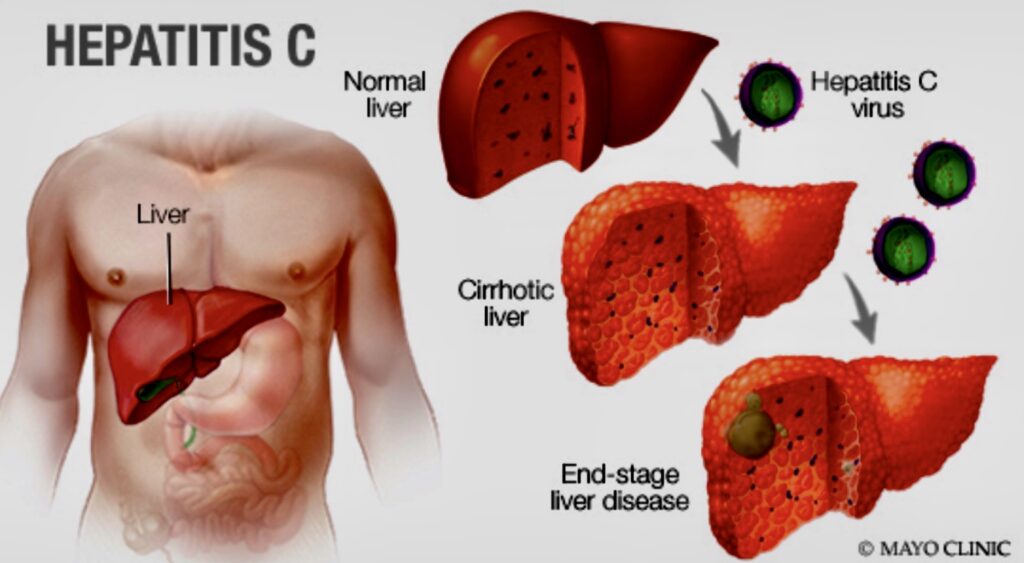By Henrylito D. Tacio
Liver disease is caused by alcohol abuse – that is what most people think. Unknowingly, there are many other causes, the most common of which is hepatitis (from Greek words hepa which means “liver” and -itis, inflammation.
Hepatitis has been known for centuries. In fact, there are reports of epidemic outbreaks of liver disease dating back to 2000 B.C.

Yet, hepatitis is, in many ways, a relatively new story. “It was not until World War II that scientists realized that hepatitis was caused by viruses and could be blood-borne as well as water-borne,” writes André Picard, a Canadian health reporter of The Globe and Mail. “This breakthrough occurred after a large number of soldiers immunized against yellow fever developed hepatitis due to the re-use of needles, not from contaminated water, as was usually the case.”
In 1963, hepatitis B was identified in 1963. It took another ten years to identify hepatitis A. In between those years, there was a hepatitis virus only known as “non-A-non-B.” It was not until 1989 that the experts identified the virus, which led to the understanding of the primary role of hepatitis C virus (HCV) in “post-transfusion hepatitis” and its tendency to induce “persistent infection.” In time, the virus was called “The Silent Killer” and the “Yellow Dragon.”
Three more viruses were discovered in later years: hepatitis D, E and G.

Various genotypes
“While they share a common name, the viruses are quite different, and even have different routes of transmission,” writes Picard, who is part of the team of World Federation of Science Journalists that raises Hepatitis C awareness campaigns. “To complicate matters further, there are different genotypes of the viruses in various parts of the world; there are already seven hepatitis C genotypes that have been identified.”
“Viral hepatitis is one of the most common and deadly infections on the planet,” writes Picard, “but, for a variety of reasons, the scourge is well down the list of public health and political priorities and, as a result, gets a negligible amount of media coverage.”
Among the several forms, hepatitis C is the nastiest, according to Dr. Alan Berkman, author of Hepatitis A to G: The Facts You Need to Know About All the Forms of This Dangerous Disease. “About 85 percent of people who are infectedby this virus never get rid of it. Chronic (lifelong) liver disease afflicts about 70 percent of people who are infected with hepatitis C and this can lead to liver cancer and death.”
In 2013, the Hepatology Society of the Philippines reported that about one million Filipinos may be infected with Hepatitis C virus.
Not easily spread
Unlike the other forms, hepatitis C is not as easily spread. It is almost exclusively blood-borne, though it is sometimes sexually transmitted. It is, however, quite deadly, killing about 700,000 people a year.
“For all intents and purposes, hepatitis C should be considered principally a healthcare-acquired infection,” Picard points out. “Most sufferers contract it through exposure to unsafe blood – for example, untested (or inadequately tested) blood used for transfusions, re-used and inadequately sterilized needles and other surgical/medical equipment, and via tattooing and piercing.”
The Merck Manual of Medical Information says that it is most commonly transmitted “among people who share needles to inject illicit drugs.” But Picard dispels this claim: “only about 10% of the overall number of cases are believed to be caused by shared needles.”
Picard further notes: “It is important to bear in mind too that much remains to be learned, particularly about hepatitis C. For example, in about 25% of cases, the route of transmission is unknown.”
The HCV is sometimes called “indolent” – that is, you can be infected with it for many years without having any symptoms. “The reasons for this are unclear,” explains Dr. Berkman. “Some researchers believe that although the virus proliferates rapidly, it can be detected by tests before there are large enough concentrations of it in the blood to produce disease. Others are convinced that the virus reproduces as quickly as any other virus, but makes defective copies of itself that don’t do much harm to the patient or don’t survive. Or it may be that the body successfully fights off the virus for a time, or somehow manages to destroy some of the virus particles while others ‘hide’ from the immune system.”

“Progressive disease”
The Geneva-based World Health Organization (WHO) calls hepatitis C as “a progressive disease.” The rate of progression, however, varies widely from person to person. In many people, the infection is without symptoms, but others have flu-like symptoms (fatigue, joint and muscular pain, nausea and vomiting) 6 to 8 weeks after the initial infection. About 10 percent of patients develop jaundice (yellowing of the skin and/or whites of the eyes).
The WHO says that about 80 percent of patients develop chronic infection after the acute stage resolves, and most of these patients experience no symptoms. When symptoms occur, they’re usually mild and intermittent and may include fatigue, abdominal pain, and loss of appetite.
Serious liver damage from hepatitis C may take years, so the younger a person is when infected, the higher the likelihood that they will eventually develop cirrhosis. According to the UN health agency, 20-40 percent of people infected with HCV will develop cirrhosis within 25 years. If cirrhosis develops, additional signs and symptoms may include muscle weakness, nausea, weight loss, itching, dark urine, fluid retention, and abdominal swelling.
About 20 percent of the patients who develop cirrhosis will go into liver failure, require a liver transplant, or develop liver cancer. Alcohol consumption, male gender, and excess iron in the liver are factors that accelerate progression to cirrhosis.
“A significant number of people who are infected with viral hepatitis – perhaps as many as one in four – clear the virus on their own and that many others, because the viruses take so long to damage the liver and cause conditions like cancer and cirrhosis, die of other causes,” Picard claims. “The lengthy period between infection and illness helps create complacency.” — ###









